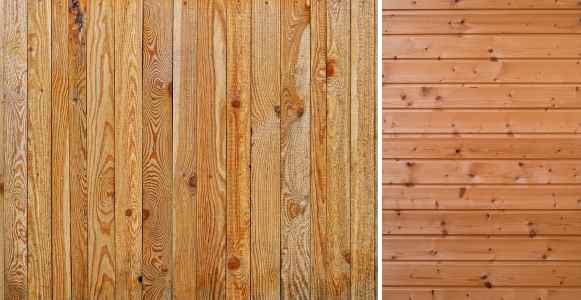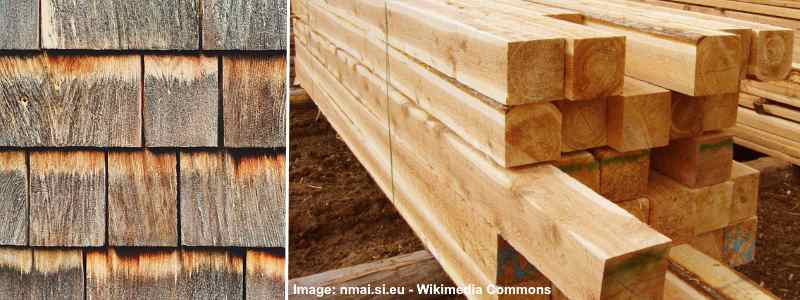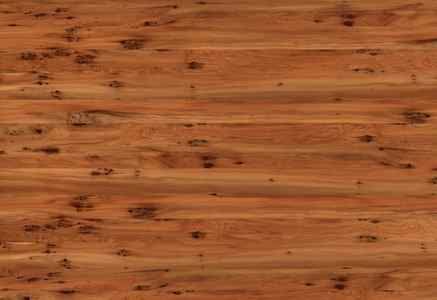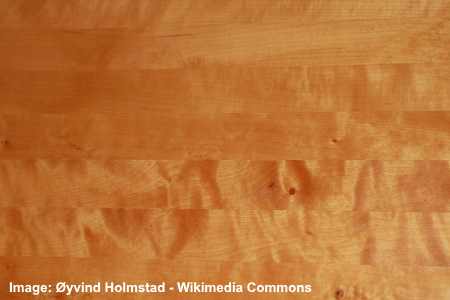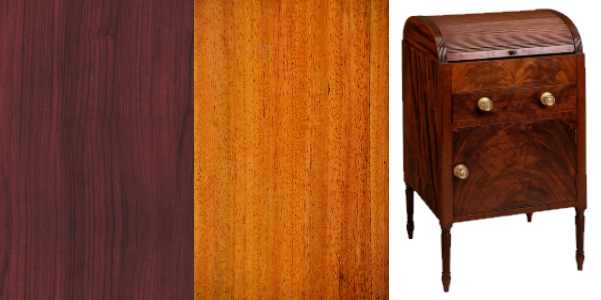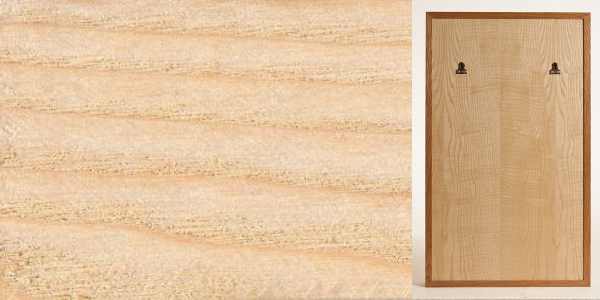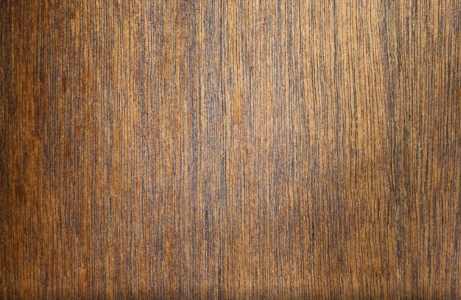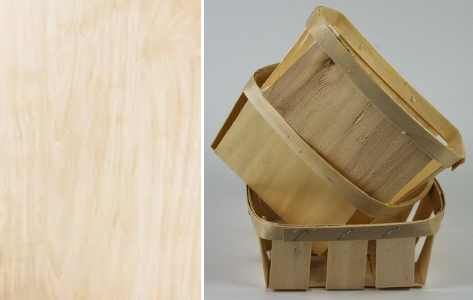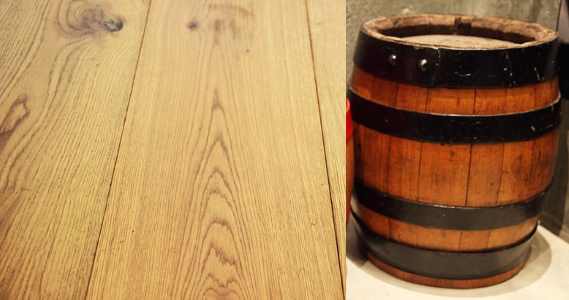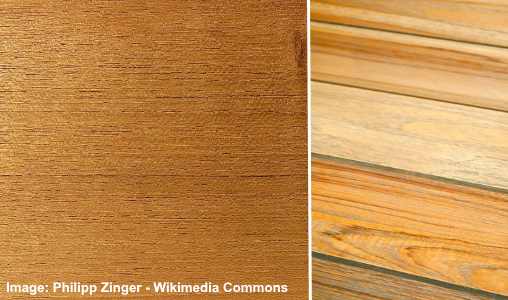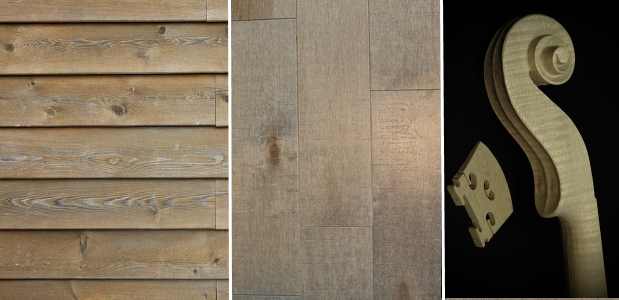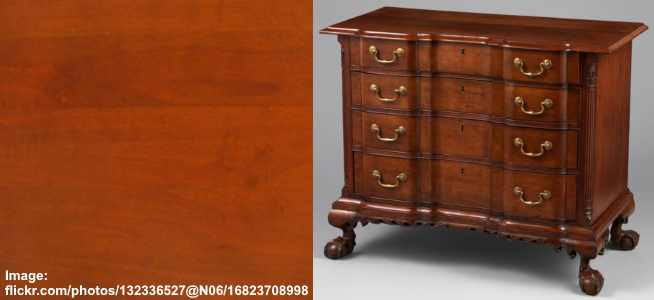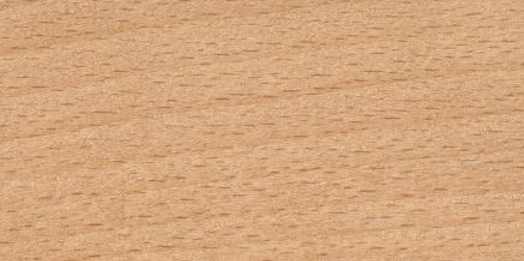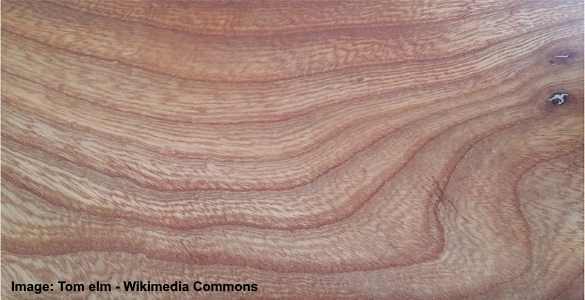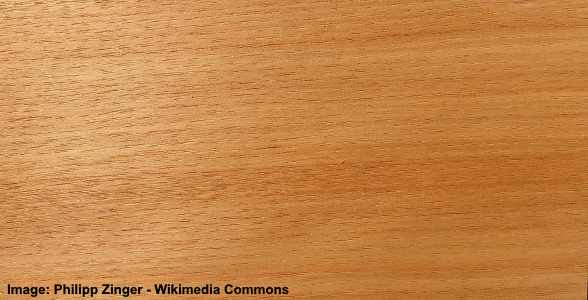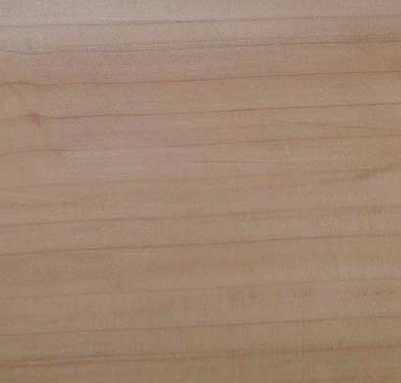Types of Wood for Woodworking and Furniture (With Name and Picture)
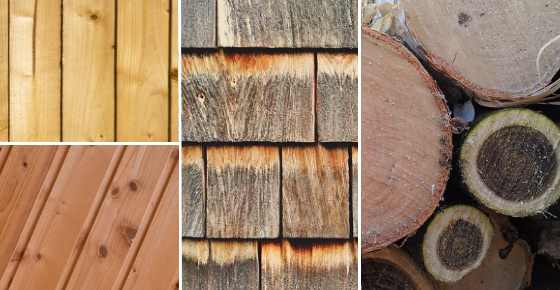
There are different types of wood that can be used for creating different types of furniture such as tables and chairs. Solid wood is a versatile natural product that can be used to create beautiful woodworking crafts, and wooden structures. Many types of softwood such as pinewood are used as timber, solid wood flooring, window frames, and furniture. Of course, you can also use hardwoods such as oak, poplar, walnut, or teak for these uses. Because most types of hardwood are expensive, using hardwood in woodworking is usually for high-end, quality items.
Different types of wood are prized for their qualities such as color, grain, density, and durability. Furniture made from some of the hardest types of wood from deciduous trees can last for many years. Even types of softwood from coniferous trees are strong and can be used in the construction industry.
Without a doubt, the beauty of wood is the fact it is renewable, recyclable, eco-friendly, natural, and aesthetically pleasing.
If you want to make furniture, woodworking, get more natural elements in your home, or even build a house, there is a type of wood suitable for your needs.
In this article, you will learn about different types of solid woods that are used in the furniture and construction industry. You will also find out how to identify species of wood based on the color, grain, and other properties.
Although classed as wood products, we won’t talk about manufactured or processed wood such as plywood, chipboard, or fiberboard (MDF).
Different Types of Wood
The different types of solid wood are divided into 2 categories – hardwood and softwood.
Hardwood
Hardwood comes from deciduous, broad-leaved trees. These trees such as ash, oak, maple, walnut, and birch are slow-growing trees, and this creates a hard type of timber. Because hardwood trees take longer to grow, their timber is denser and more durable. This makes many types of hardwood more expensive than softwood.
Softwood
Softwood types come from conifers such as fir, pine, spruce, and cedar. These are straight, tall, fast-growing trees which make their wood perfect for many joinery applications. Although they are classed as softwoods, some of them are not weaker than hardwoods. Softwood such as pine is cheaper than most hardwoods, but it is less durable.
Hardwood vs. softwood
Comparing pictures of hardwoods and softwoods, you will notice that the color of hardwoods is generally darker and denser than that of softwoods. However, this is not always the case because woods such as poplar and pine look very similar.
It is also important to know that the terms “softwood” and “hardwood” refer to the structure of the wood, not its properties. Researchers say that some types of wood classified as soft can be just as hard as some hardwood varieties. (1)
Types of Softwood with Name and Picture
Softwood timber for construction and furniture making is the most commonly used type of wood in the world. Let’s look at some of the most popular species of softwood.
Pine
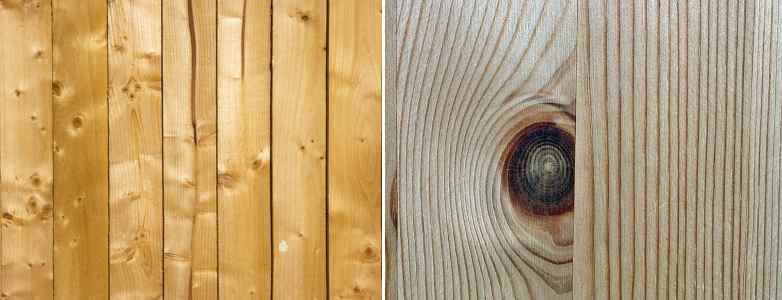
Pinewood is popular type of furniture softwood and has color variations depending on the tree species
Pinewood is one of the most popular types of wood to use as timber in carpentry and construction. There over 125 species of pine trees in the genus Pinus. Some popular pine woods are Eastern white pine, Scots pine, Red pine, and Lodgepole pine.
Pine trees grow fast and straight and their wood is relatively soft. This makes pinewood easy to work with. Pinewood is used to construct timber frames, window frames, paneling, and a wide range of furniture.
When compared to other softwoods such as spruce, pine is denser and more durable.
Wood identification and features
- Color. Varies in color from yellow to creamy white.
- Density. Strong and lightweight.
- Grain. Straight grained.
- Common Uses. Paneling, flooring, joinery, carvings, doors, frames, and furniture.
- Finishing. After being sealed, pine finishes well.
Spruce
Spruce (Picea) is another species of coniferous evergreen tree in the softwood category. Although classed as a softwood, spruce is widely used in the timber industry to create structural support. This conifer tree is so popular in construction that it is sometimes just referred to as North American timber. When used in furniture making, spruce wood molds and planes easily.
It is not recommended to use spruce outdoors as it is not resistant to decay.
Wood identification and features
- Color. Light yellow to reddish-brown.
- Density. Strong and moderately hard.
- Grain. Consistently fine straight grain.
- Common Uses. Joinery, musical instruments, crates, and construction frames.
- Finishing. It needs to be sealed and it finishes nicely.
Douglas Fir Wood
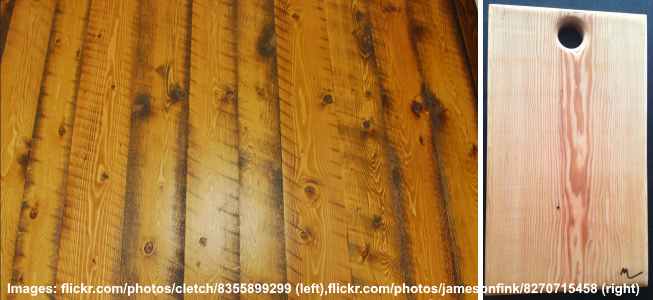
Douglas fir wood is relatively cheap softwood and has many uses such as flooring (left) and cutting boards (right)
Douglas fir is one of the harder types of softwoods that has multiple uses in the timber industry. The Latin name for Douglas fir is Pseudotsuga menziesii which means it is not a true fir but a member of the pine family. Douglas fir trees grow in forests on the west coasts of North and South America, Europe, and New Zealand. Lumber from Douglas fir is also inexpensive and it is a good choice to make cheap furniture.
Wood identification and features
- Color. Can vary depending on age, but usually light brown with red or yellow hints and darker growth rings.
- Density. One of the hardest softwoods.
- Grain. Straight, uninteresting grain pattern.
- Common Uses. Furniture, crates, wooden aircraft, indoor construction, veneers, and flooring.
- Finishing. It can be stained, but it is usually painted over.
Cedar
Cedar is a conifer therefore it is classified as a softwood. The most common type of cedar (Cedrus) used as lumber is Western red cedar which is also called aromatic red cedar. As its name suggests, this cedar wood has a distinct red tinge to it and it gives off a pleasant aroma. The oil in the wood is resistant to moths and insects which gives the wood durable properties. This makes cedar one of the few types of softwood that is good for outdoor use.
Wood identification and features
- Color. Reddish-brown for red cedar. Pale yellow for yellow cedar.
- Density. Hard type of wood (but not hardwood) with a good texture and is also lightweight.
- Grain. Straight grain and the wood contains many knots.
- Common Uses. Decks, garden furniture, fence posts, and closet linings.
- Finishing. Use an oil finish to bring out the grain and wood color.
Yew
European yew (Taxus baccata) is a softwood tree that is quite easy to work with, although it is harder and heavier than some of the hardwoods. The elastic properties of yew mean that it is the wood of choice to make bows or other wooden items that require bending. Yew is one of the most resistant of all the softwood species.
Wood identification and features
- Color. Shades of orange and brown.
- Density. Dense softwood that is very strong. One of the hardest woods in the softwood classification.
- Grain. Straight grain.
- Common Uses. Furniture, veneers, musical instruments, cabinets, and archery equipment.
- Finishing. Needs to be sealed.
Types of Hardwood with Name and Picture
Hardwoods are some of the most beautiful types of wood to use for making furniture, kitchen counters, or other natural household items. Hardwoods are known for their interesting grains, deep colors, and dense texture.
However, hardwood trees take longer to grow than softwoods, making them a premium material with a more expensive price tag.
Let’s look at the many different types of hardwoods.
Birch
Birch (Betula) is one of the cheaper types of hardwood that has many uses in the timber industry. There are a number of varieties of birch with yellow birch and white birch being the most popular. Due to its fine grain and rippling effect, birch wood is often used as a veneer. The hard wood is also flexible and is used to make strong wooden items such as skateboards. If you are looking for a low-cost hardwood alternative to pine, then birch is a good choice.
Wood identification and features
- Color. Pale to light yellow that becomes light brown near the center of the trunk.
- Density. Hard and dense, yet lightweight with flexible properties.
- Grain. Fine wavy grain.
- Common Uses. Boxes, seats, interior doors, plywood, toys, and quality furniture.
- Finishing. Finishes well and looks good varnished, oiled, or painted.
Mahogany
Mahogany is one of the most beautiful hardwoods due to its deep red color, attractive grain, and durability. This type of premium hardwood is resistant to rot and easy to work with. This gives mahogany a number of uses from making furniture, to constructing boats and musical instruments. Over time, mahogany darkens to become an almost deep burgundy color.
Wood identification and features
- Color. Reddish-brown to dark red.
- Density. Heavy wood that is moderately dense.
- Grain. Fine, straight, even grain.
- Common Uses. Classic furniture, musical instruments, outdoor decking, boats, doors, expensive furniture, and veneers.
- Finishing. Sanding then sealed with penetrating oil.
Ash
Ash (Fraxinus) is a light-colored quality hardwood that bends easily and is extremely tough. You will often see ash wood used in wooden items that require flexibility and strength such as guitar necks and curved backrests on chairs. Ash hardwood is very popular because it looks good, is easy to work with, and is very strong. Ashwood is becoming an expensive type of hardwood due to dwindling numbers of the trees.
Wood identification and features
- Color. White to pale brown.
- Density. Extremely dense and hard but remains flexible.
- Grain. Very light, sometimes hardly noticeable, grain patterns.
- Common Uses. Furniture, furniture veneers, musical instruments, baseball bats, bows (archery), and tool handles.
- Finishing. Easy to finish with oil, varnish, or paint.
Walnut
Walnut timber (Juglans) is one of the more expensive types of hardwood that has dark graining and a beautiful appearance. The reason why walnut is so popular is that it carves well and is extremely strong. Walnut is not a cheap hardwood and, therefore, is used for carving, inlays, or accents.
Wood identification and features
- Color. Sapwood is creamy white and the heartwood is dark brown.
- Density. Hard and dense with a medium texture.
- Grain. Attractive tight to open grains that can have an irregular pattern.
- Common Uses. Expensive furniture, musical instruments, carvings, gun stocks, and wooden bowls.
- Finishing. Use oil to bring out the beautiful natural grains.
Poplar Wood
If you are looking for cheap hardwood lumber, then poplar wood is one of the best choices. Poplar trees (Populus) are fast-growing trees and are a good alternative to pine if you want a light-colored hardwood. Poplar is denser than pine, it doesn’t warp easy, and it is not prone to dents.
Wood identification and features
- Color. Light cream to yellowish-brown.
- Density. Low density.
- Grain. Uniform, straight grain with medium texture and small pores.
- Common Uses. Inexpensive durable furniture, upholstered furniture, crates, pulp (for making paper), and pallets.
- Finishing. It requires work to get a smooth finish. Unimpressive finish that is usually painted.
Oak
Oak (Quercus) is a well-known strong wood that is known for being a dense hardwood. The reasons why oak is popular in furniture making and flooring are that it has a beautiful appearance and is hard-wearing. White oak is the most popular type of oak wood for woodworking when making outdoor and interior furniture. Types of red oak are also commonly used in furniture making.
Wood identification and features
- Color. Light to medium brown.
- Density. High density and hard.
- Grain. Straight with an uneven texture.
- Common Uses. Flooring, cabinets, paneling, expensive furniture, wine and sherry casks, and musical instruments.
- Finishing. Natural finish with oil.
Locust Wood
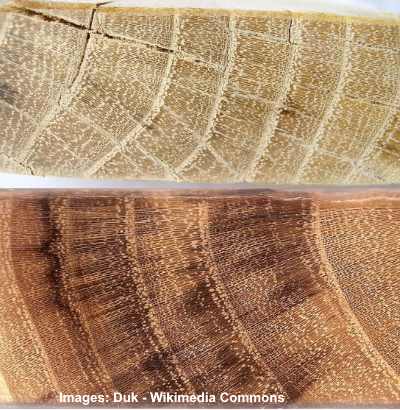
Upper picture: end grain of black locust wood, no finish. Lower picture: wood is finished with linseed oil and shellac
Locust wood, especially the black locust species (Robinia pseudoacacia), is one of the hardest types of wood. The fact that the tree’s wood is resistant to rot makes this the perfect choice for outdoor furniture. This high-quality hardwood had multiple uses in joinery and carpentry. Another type of locust wood is honey locust (Gleditsia triacanthos) which is so hard and strong that the wood can be used as nails.
Wood identification and features
- Color. Pale yellowish-green to dark brown.
- Density. Very dense and difficult to work with.
- Grain. Straight grain with a medium texture.
- Common Uses. Fence posts, furniture, boats, and solid wood flooring.
- Finishing. Finishes well but may blunt your instruments.
Teak
Teak wood is an example of an expensive hardwood that is well-suited to outdoor conditions. Unfortunately, it is getting more difficult to find true teak wood, and furniture makers have to find alternatives to teak wood. Teak has high oil content that makes it naturally weatherproof and resistant to insects such as termites. Teak is easy to work with and it has a beautiful tight grain.
Wood identification and features
- Color. Light brown to medium brown which gets darker as it ages.
- Density. Dense and strong and is also heavy.
- Grain. Straight grain with an uneven texture.
- Common Uses. Solid wood outdoor furniture, decks, exterior construction, boats, and veneers.
- Finishing. May blunt tools due to silica in the wood, but finishes well with lacquer.
Maple
Maple wood (Acer) has a similar color to birch wood and is one of the hardest woods. Even the wood from soft species of maple trees is harder than most hardwoods. Due to its density and hardness, furniture made from maple will withstand years of wear and tear. Despite being a durable type of hardwood, maple wood is not as expensive as some other hardwoods. Some species of maples are prized for their unique and decorative grain patterns.
Wood identification and features
- Color. Creamy-white to reddish-brown, depending on which part of the trunk the wood is from.
- Density. Very dense and hard-wearing making it difficult to work with.
- Grain. Straight, sometimes wavy grain with a fine even texture.
- Common Uses. Any type of quality furniture, solid wood flooring, baseball bats, butcher’s blocks, and bows (archery).
- Finishing. Easy to finish.
Cherry
Cherry is a popular type of hardwood that excellent for making furniture. Cherry wood is easy to work with and it finishes well, making cherry wood furniture sought-after items. Compared to other hardwoods, cherry wood is relatively soft. However, it doesn’t warp or bend easily, making it a good type of wood for any kind of furniture. The cost of cherry wood lumber ranges from moderate to expensive.
Wood identification and features
- Color. Sapwood is creamy white and the heartwood is dark brown.
- Density. Medium-density and easy to work with.
- Grain. Straight grain with an even texture.
- Common Uses. Fine furniture such as desks, tables, and chairs, veneers, and solid wood flooring.
- Finishing. Finish with linseed oil to bring out the beautiful grain.
Beech
North American beech wood (Fagus grandifolia) comes from a deciduous, broad-leafed tree. Beech is a very hard type of wood and quite heavy. One of the main uses of beech wood is where bending and shaping are required. Due to its durability and resistance to shock, beech furniture is hard-wearing and robust.
Wood identification and features
- Color. Pale cream, light pink or red to tan.
- Density. High density and hardwood.
- Grain. Tight grain and even texture.
- Common Uses. Seating furniture, desks, railroad ties, lumber, and turned objects.
- Finishing. Easy to finish with a wide range of finishes.
Elm
The wood from elm trees (Ulmus) has beautiful interlocking grain patterns and is resistant to splitting. Elm trees also tend to grow long and straight, making this type of hardwood prized for high-quality lumber. Because of the strength of elmwood, its water resistance, and its bending qualities, elm was the hardwood of choice for building ships.
Wood identification and features
- Color. Light to medium reddish-brown.
- Density. There are hard elm species with dense wood and soft elm species with medium-dense wood.
- Grain. Interlocked grain that makes the wood hard to work with and split-resistant.
- Common Uses. Chair seats, drums (musical instruments), coffins, and wooden shipbuilding.
- Finishing. Finishes well.
Hickory
Hickory (Carya) is one of the best all-round hardwoods because of the balance between strength, hardness, and stiffness. In this respect, hickory is a unique type of hardwood that is also reasonably priced. The versatility of hickory in woodworking and its toughness means that it is becoming one of the most popular hardwoods.
Wood identification and features
- Color. Light to medium brown that sometimes has light red hues.
- Density. High-density hardwood.
- Grain. Straight grain with a medium texture.
- Common Uses. Sports equipment such as bats, handles, paddles, and golf clubs. Solid wood flooring, walking sticks, and furniture.
- Finishing. Easy to apply stain/lacquer and has a lustrous shine.
Willow
Willow (Salix) is a popular type of hardwood where both the tree trunk and branches are used in woodworking applications. Willow rods are strong yet flexible and can be woven into wicker baskets. The hard, dense wood from willow trees is also extremely versatile and has many uses. Willow wood also has bending properties and it responds well to steam bending.
Wood identification and features
- Color. Varies considerably depending on the type of willow tree. Black willow wood can be brown-gray and white willow wood can be tan to pinkish brown in color.
- Density. Medium-density.
- Grain. Irregular grain that is interlocked and has a fine texture.
- Common Uses. Toys, sports bats, broom handles, furniture, tool handles, paper, and rope.
- Finishing. Willow is difficult to season and dry. However, it finishes well.

